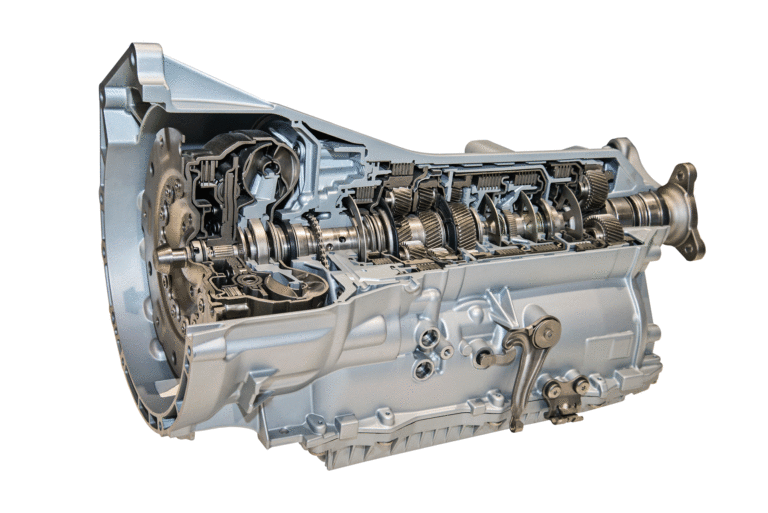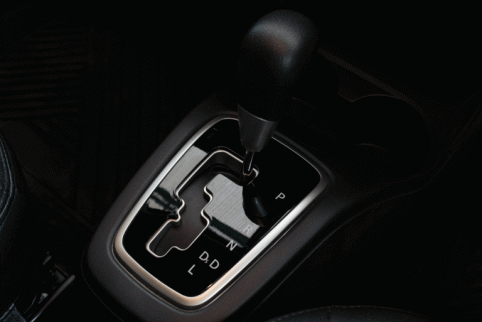One piece of advice we offer to all used-vehicle buyers is to have any car or truck inspected by a mechanic before you buy it. The $100 to $200 you’ll spend can save you tons of money in repairs on a poorly maintained vehicle.
For that price, a good mechanic can tell you whether a used car is not what it seems. At the same time, $200 is a lot of money, so you want to be picky about which cars you take to your mechanic.
In a series of blog posts, we’re going to discuss some simple mechanical checks you can do during your test drive. These will give you clues as to whether the car you’re thinking of buying has been properly cared for by its previous owners. In some cases, what you find could save you the trouble of having your mechanic point out an obvious flaw in a used vehicle.
For our first installment, we’ll discuss the automatic transmission.
Automatic Transmission Types
GM introduced the first mass-produced automatic in 1940, and this technology is now standard in the majority of new vehicles.
The last few decades have seen a few innovations in automatic-transmission technology. One is the continuously variable transmission, or CVT, which, instead of gears, uses a pair of pulleys connected by a metal belt. Another is the dual-clutch transmission, which is closer in concept to a manual transmission but adds automated shifting. Both types boast smoother shifting than a traditional automatic based on that original GM design, and CVTs also promise better fuel economy.
How Do You Tell What Type of Automatic a Vehicle Uses?
A bit of Internet research will tell you what type is used in the car you’re looking at, so you know what to watch for during your test drive.
Among used vehicles with automatic transmissions, the majority will have the traditional kind. Six-speed transmissions are common, but a few will have four or five gears while others may boast as many as nine or 10.
Nissan uses CVTs in most of its cars and crossovers, and Honda installs them in its popular Civic and CR-V and some versions of the Accord. Mitsubishi favours CVTs, too. Most gas-electric hybrid vehicles use a CVT, regardless of manufacturer.
Dual-clutch transmissions are less common. The Volkswagen GTI, Ford Focus and Fiesta, Mercedes-Benz CLA-, GLA- and B-Class models and Acura ILX and TLX use dual-clutch automatics. Ford’s and VW’s designs have six speeds, Mercedes’s has seven ratios and Acura’s has eight speeds.
How Should an Automatic Transmission Shift?

- Any automatic should engage drive (forward) or reverse with nothing more than a gentle bump a second or two after you move the shift lever. If it slams or bangs into gear, put it back into park and try again. If it does the same thing, that could be your first sign something isn’t right. Likewise, a transmission that takes more than a count of three to shift into gear could be faulty.
- Once you start driving, the transmission should shift through its gears smoothly. Again, it’s okay if you can feel the transmission work, but abrupt or harsh shifting is a warning sign. Also listen to the engine as the transmission shifts. If it revs up briefly as the transmission changes gears, it may indicate something’s wrong.
- A CVT should allow the engine to rev up briefly as you drive away and then smoothly shift to a higher ratio as the car accelerates. It’s common for the engine to remain at the same speed during acceleration. Once you reach cruising speed, the engine should settle somewhere between 1,500 and 2,000 rpm, depending on the car. The engine speed should remain constant until you press the gas pedal down to accelerate. If the engine speed varies significantly on its own, that’s not normal.
- When you shift a dual-clutch transmission into gear, you shouldn’t feel much until you release the brake pedal. At that point, the clutch should engage smoothly and begin moving the car. Gear shifts should be very smooth.
- During your test drive, find a quiet stretch of road where you can safely slow down to about 40 km/h and then accelerate quickly. No matter what type of transmission the car has, it should respond in a second or two by downshifting to let the engine rev up. If the transmission bangs into the lower gear or takes longer than two seconds to make the shift, it could mean trouble.
Check the Transmission Fluid
If you suspect trouble in the car you’re driving, check the transmission fluid level.
- The dipstick is usually orange, or will be marked “ATF,” for automatic transmission fluid. Park the car on level ground and leave it running. Armed with a paper towel, pull the dipstick and wipe it clean. Then re-insert it and pull it out again. The fluid level should be visible on the dipstick, which will be marked to show the proper level. When you wipe the fluid off the stick, it should be pink, or light brown with a pink tint. If it’s dark brown and smells burnt, the fluid has been left too long without a change.
- If the fluid level is low enough that it doesn’t show up on the dipstick, that’s a sign of neglect. It’s also a possible source of the car’s performance issues: ATF both provides lubrication and is pressurized to make the transmission’s mechanical parts work properly. If there’s not enough fluid in the transmission, it won’t shift the way it should.
- Also, if the transmission has been neglected badly enough that its fluid is dark and burnt, changing the fluid could make things worse, counter-intuitively. At that point, the best fix may be having a new transmission installed, which is an expensive job.
- Note that some automatic transmissions have no dipstick. These ones use fluid designed to last for many years and checking its condition is best left to a mechanic.
Does the Car Have a Trailer Hitch?
Towing puts extra strain on a transmission and generates heat, which accelerates wear and tear on an automatic. That can be mitigated by more frequent fluid changes and by installing an aftermarket fluid cooler. All automatic cars come standard with one — it’s like a small radiator to keep the fluid from overheating — but aftermarket ones are usually larger and more effective.
If the automatic car you’re looking at has a hitch, ask the seller for proof they’ve done regular fluid changes. Also, find out whether the car’s manufacturer recommends against towing. In that case, the presence of a hitch could void the car’s powertrain warranty, if it’s still in effect.
If the car shifts well and the fluid is in good condition, ask your mechanic for their opinion on whether the transmission has been properly cared for.


